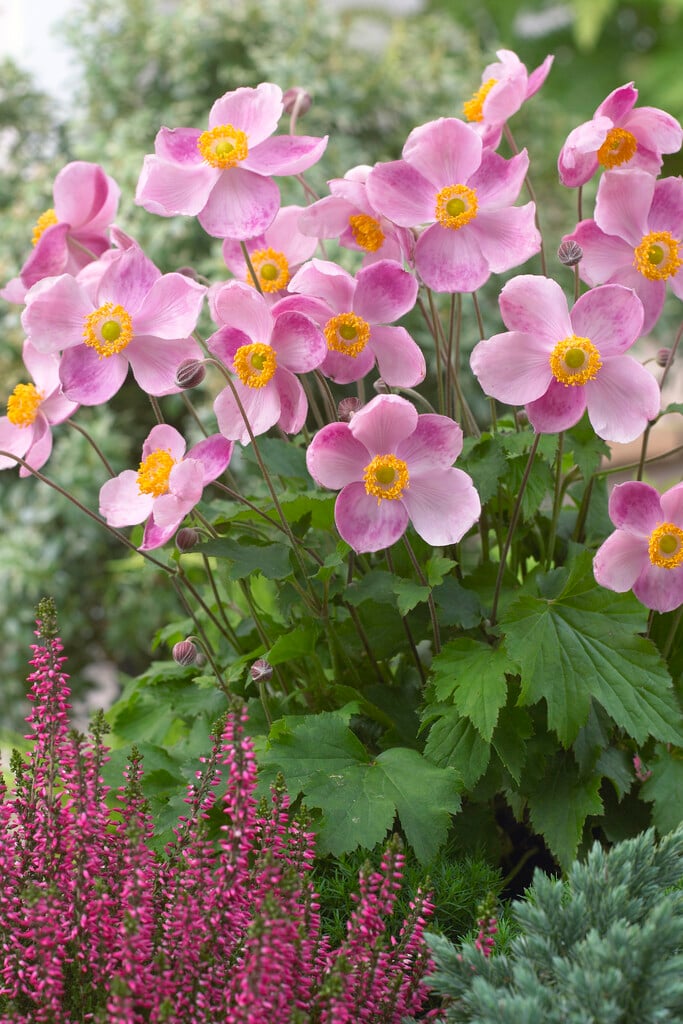Anemone hupehensis 'Little Princess'PBR
Japanese anemone 'Little Princess'
A compact herbaceous perennial with dark green toothed leaves which are divided into three lobes. Has saucer-shaped rose-pink flowers with a yellow centre from summer to late autumn.
Size
Ultimate height
0.1–0.5 metresTime to ultimate height
2–5 yearsUltimate spread
0.5–1 metresGrowing conditions
Moisture
Moist but well–drainedpH
Acid, Alkaline, NeutralColour & scent
| Stem | Flower | Foliage | Fruit | |
| Spring | Green | |||
|---|---|---|---|---|
| Summer | Pink | Green | ||
| Autumn | Pink | Green | ||
| Winter |
Position
- Full sun
- Partial shade
Aspect
East–facing or North–facing or South–facing or West–facing
Exposure
Exposed or Sheltered Hardiness
H7Botanical details
- Family
- Ranunculaceae
- Native to GB / Ireland
- No
- Foliage
- Deciduous
- Habit
- Clump forming
- Genus
Anemone are herbaceous perennials with fibrous, rhizomatous or tuberous rootstocks, palmately lobed leaves and saucer-shaped, usually 5-petalled flowers
- Name status
Accepted
How to grow
Cultivation
Will grow well in humus rich, moist but well-drained soil avoiding excessive wet conditions in winter
Propagation
Propagate by division in early spring and autumn
Suggested planting locations and garden types
- City and courtyard gardens
- Coastal
- Cottage and informal garden
- Wildlife gardens
- Cut flowers
- Flower borders and beds
Pruning
Cut back old stems after flowering
Pests
May be susceptible to leaf and bud eelworm, caterpillars and slugs
Diseases
May be susceptible to Powdery mildews and Anemone smuts
Get involved
The Royal Horticultural Society is the UK’s leading gardening charity. We aim to enrich everyone’s life through plants, and make the UK a greener and more beautiful place.
